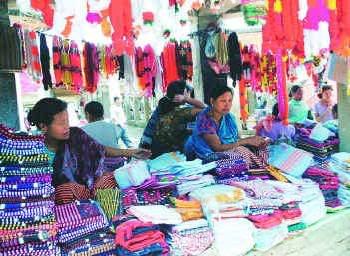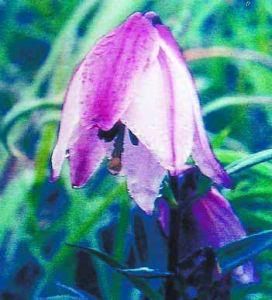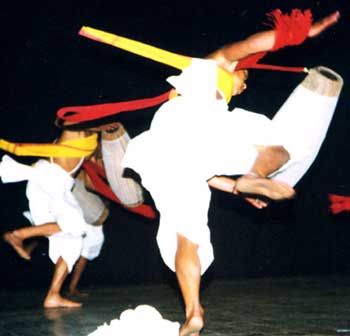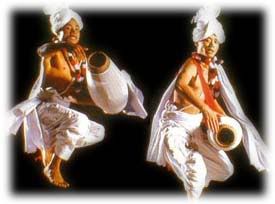The people of Manipur-II
I will make this episode short.
Another interesting aspect of manipur is that, the women are more empowered than most other races. But unlike the confusion and misconception by some, manipur society is not a matriarchal one, unlike the Khasis of Meghalaya. But, Yes It is true that Women takes active part in Social and moral policing and, of course Business. When I say Business, it is the small trade of mini retailing like vegetable and fish vending and traditional cloths. They operate in markets commonly known as keithel. A women dominated keithel is called Ema keithel (Also called Khwairamband Bazaar around 1580), Ema for mother since the trade is done my mostly elder Women. The vegetable and Rice mandi is also controlled by women in a loosely held system. Bigger business is, of course, mostly in the hands of marwari traders. In fact Ema-keithel is petty famous, perhaps a one of its kind and there have been write ups and photo documentaries on the same. Gold and Jewel trade is also most done by women.


Women have also played major roles in the politics of Manipur. Not that there have been many many politicians, but women groups do have a say in many matters. This can be dated back to 1931, when a very important event took place called the Nupi Lan. Nupi Lan marked an important event in the history of Manipur. Nupi Lan means the women's war, Nupi meaning women and Lan meaning war, when women stood up in an uprising againts what we called chak tangba( inflation of food ie rice). The war or uprising started at the said Ema Keithel, when women protested against exports of Rice to Assam to feed the Brittish when Rice itself became scarce in Manipur. But since the brittish were paying, more local prices shot up making it very expensive in Manipur thereby causing a lot of problems for the local populace. Read more. We rememeber the brave women who fought in nupi lan with state holiday every december the 12th.
Women ever since have learnt the power of group effort( I didn't say unions, since they are anything but Left) and have taken up many social causes, the latest being the Manorama case.
Women groups called the Meira Paibi's or torch bearers are women groups whose only common identity being the torce, the kind that was seen in old hindi movies and caves. A short wooden staff with fire burning at the tip. Meira paibi's roam the streets of manipur late at night to keep Vigil against unlawfull activities. Started as a group to punish errant husbands and sons who took to drinking and rowdism late at night, they have evolved to a political force of sorts with a say in everthing.
Even today, many women are doing quite well in their respective fields. In my batch, the state topper in High School was a Girl. Yet there are instances of exploitation, domestic violence, etc but they are minor instances compared to the other parts of India.
Read more about Manipuri Women
Read about Meira Paibis and Thokchom Ramani
My regular Blog at Anthonysmirror
Another interesting aspect of manipur is that, the women are more empowered than most other races. But unlike the confusion and misconception by some, manipur society is not a matriarchal one, unlike the Khasis of Meghalaya. But, Yes It is true that Women takes active part in Social and moral policing and, of course Business. When I say Business, it is the small trade of mini retailing like vegetable and fish vending and traditional cloths. They operate in markets commonly known as keithel. A women dominated keithel is called Ema keithel (Also called Khwairamband Bazaar around 1580), Ema for mother since the trade is done my mostly elder Women. The vegetable and Rice mandi is also controlled by women in a loosely held system. Bigger business is, of course, mostly in the hands of marwari traders. In fact Ema-keithel is petty famous, perhaps a one of its kind and there have been write ups and photo documentaries on the same. Gold and Jewel trade is also most done by women.


Women have also played major roles in the politics of Manipur. Not that there have been many many politicians, but women groups do have a say in many matters. This can be dated back to 1931, when a very important event took place called the Nupi Lan. Nupi Lan marked an important event in the history of Manipur. Nupi Lan means the women's war, Nupi meaning women and Lan meaning war, when women stood up in an uprising againts what we called chak tangba( inflation of food ie rice). The war or uprising started at the said Ema Keithel, when women protested against exports of Rice to Assam to feed the Brittish when Rice itself became scarce in Manipur. But since the brittish were paying, more local prices shot up making it very expensive in Manipur thereby causing a lot of problems for the local populace. Read more. We rememeber the brave women who fought in nupi lan with state holiday every december the 12th.
Women ever since have learnt the power of group effort( I didn't say unions, since they are anything but Left) and have taken up many social causes, the latest being the Manorama case.
Women groups called the Meira Paibi's or torch bearers are women groups whose only common identity being the torce, the kind that was seen in old hindi movies and caves. A short wooden staff with fire burning at the tip. Meira paibi's roam the streets of manipur late at night to keep Vigil against unlawfull activities. Started as a group to punish errant husbands and sons who took to drinking and rowdism late at night, they have evolved to a political force of sorts with a say in everthing.
Even today, many women are doing quite well in their respective fields. In my batch, the state topper in High School was a Girl. Yet there are instances of exploitation, domestic violence, etc but they are minor instances compared to the other parts of India.
Read more about Manipuri Women
Read about Meira Paibis and Thokchom Ramani
My regular Blog at Anthonysmirror





